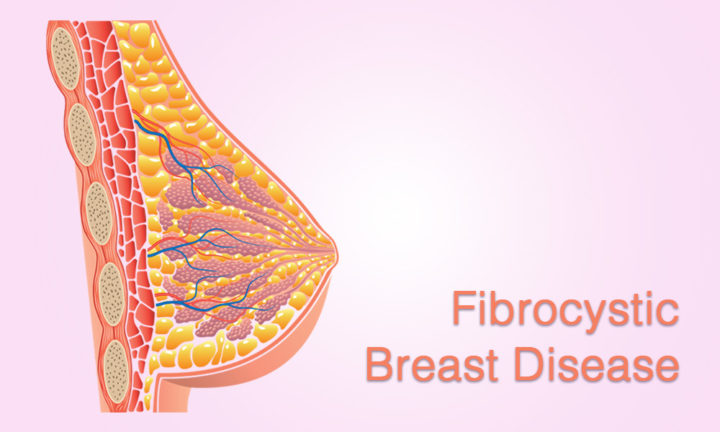Fibrocystic Breast Disease is Common

Fibrocystic breast disease is a noncancerous breast disorder that, according to researchers, affects 1 out of 2 women at some point in their lifetime.
Women experiencing fibrocystic breast disease might notice a single lump or multiple small lumps in areas of their breast. These breast lumps frequently occur before a monthly menstrual cycle and might cause soreness and tenderness. However, symptoms can occur at any time during the menstrual cycle.
Women are encouraged to perform a self-breast exam each month to feel for any lumps or changes in their breast. Self-breast exams are best when completed seven days after the menstrual period has stopped. In addition to monthly self-breast exams, women also are encouraged to stay up to date with their mammograms. If a woman has no family history of breast cancer, mammogram screening should begin at the age of 40. Future mammogram screening is recommended each year after the initial screening.
Fibrocystic breast disease is commonly found in women ages 30 to 50. Once a woman reaches menopause, the likelihood of developing fibrocystic breast disease decreases. The disease can imitate or disguise the same signs and symptoms of breast cancer. Therefore, it is important for women who discover a lump to schedule an appointment with their doctor as soon as possible.
To determine if an individual has fibrocystic breast disease, your health care provider will perform an in-office breast exam and might order imaging studies to rule out breast cancer. Imaging studies allow pictures of the inside of the breast to be taken that would normally not be able to be seen with the naked eye. These imaging studies might include a mammogram or a breast ultrasound.
Individuals diagnosed with fibrocystic breast disease typically do not require further treatment. However, to increase the women’s comfort level, treatment of symptoms such as pain is key.
A number of treatment options do not require the use of medications. For example, wearing a supportive bra might help relieve breast symptoms. To help relieve pain, women might find comfort by applying ice or warm compress to the painful areas of the breast.
Diet also plays a vital role in reducing the incidence of breast tenderness among individuals diagnosed with fibrocystic breast disease. Limiting caffeine, fat and salt can help decrease tenderness felt in the breast.
Over-the-counter pain medications also might provide relief of symptoms associated with fibrocystic breast disease. Women taking acetaminophen (Tylenol), ibuprofen (Advil, Motrin) or naproxen (Aleve) are encouraged to read and follow all of the instructions on medication labels. Women are not encouraged to take more than one pain medication unless recommended by their provider. Taking too many over-the-counter medications can potentially be harmful to the body.
Certain symptoms require immediate attention by a health care provider. For example, fever, swelling, redness or pain of the breast could be a sign of an infection. Discharge from the nipple or a hard lump could indicate a more serious problem and requires immediate attention by a health care provider.
Dominique Speaks is a family nurse practitioner at HopeHealth Medical Plaza in Florence, where she focuses on women’s health.
This article was also featured in the ‘Health’ section of SCNOW Morning News.
